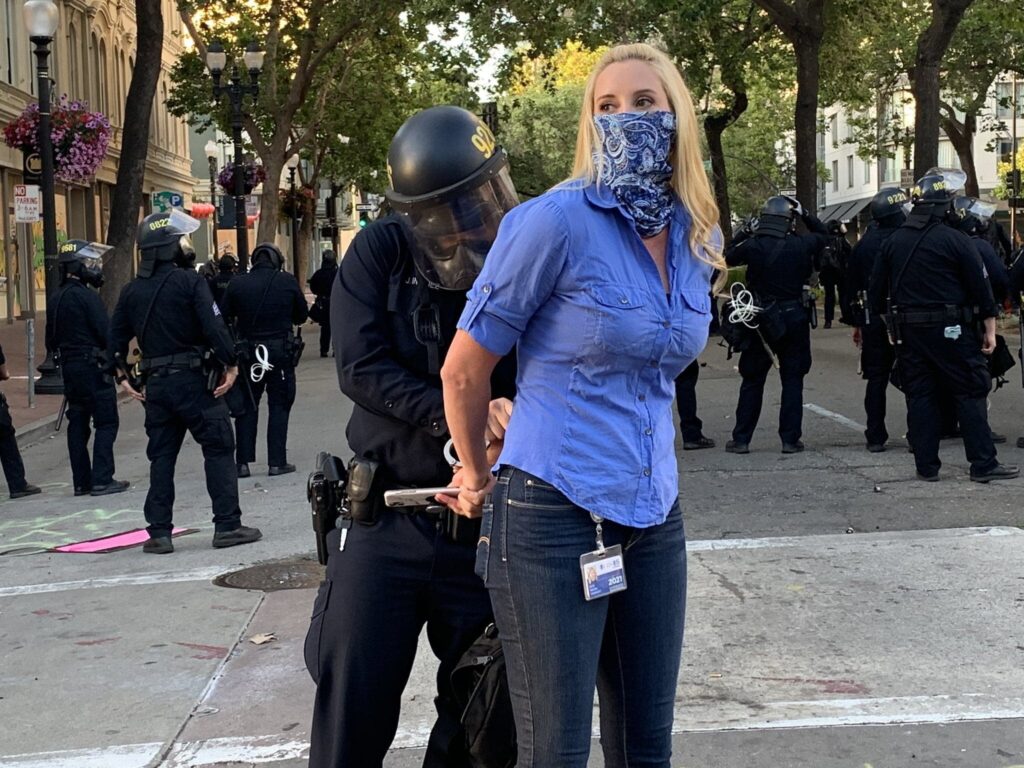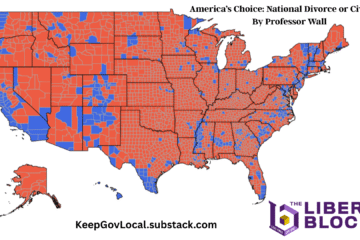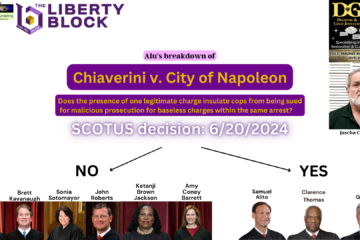By Caleb Dyer for The Liberty Block
As demonstrations, protests, and riots erupted across the United States in solidarity with the murder of George Floyd and other victims of police brutality, many journalists, reporters, and even common people took to the streets to document and record the happenings. Every major news outlet was represented in cities like Minneapolis and St. Paul as well as Atlanta and Louisville. Even minor local outlets and independent journalists were out in force to cover what were sure to be historic events. Unfortunately, in a great many cities and towns, these reporters and journalists became the target of coordinated efforts by police to restrict their ability to effectively report on the events in their locales.
Police reportedly used a variety of tactics to restrict journalistic access to areas where there were on-going protests and demonstrations. In cities like Los Angeles, reporters were arrested for alleged violations of a curfew despite a specific legal exemption for members of the press. In Minneapolis, a more direct approach was taken, whereby reporters were systematically detained or arrested to exclude them from areas police planned to occupy. At least two dozen journalists from international, national, local, and independent outlets were targeted by Minnesota State Police and Minneapolis Police including CNN correspondent Omar Jimenez, who was detained and arrested along with the rest of his crew.
In Oakland and Atlanta, there were similar reports of journalists being detained or arrested while covering protests and demonstrations. Haisten Willis, a freelance journalist covering events in Atlanta for the Washington Post, was detained for having a digital press pass. He was released by police when they searched his wallet and discovered his business cards which identified him as a journalist. However, he was excluded from the protest area and was unable to continue to document events directly. In Oakland, Katie Nielsen, a reporter for KPIX 5 News, was arrested during live coverage of demonstrations. She was later released without charges and a spokeswoman for the Oakland Police Department later apologized for the arrest. Regardless, the arrest prevented Ms. Nielsen from continuing coverage and no action has been taken concerning the wrongful arrest. This violates the first amendment.

There have even been reports of journalists and reporters beaten and brutalized by police as well as destruction of their audio and video recording equipment. Police have also deployed chemical weapons such as tear gas and pepper spray against journalists, claiming to have mistaken them for demonstrators. Rubber and beanbag projectiles have been fired at and have struck journalists including a student journalist in New Mexico.
Police are hardly concealing their intent to stifle free press by abusing the powers of detention and arrest to restrict movement of journalists and reporters. Police are aware that what journalists and reporters witness and capture on film will be reported to the public. In order to control the narrative and obfuscate police activities from the public view, it is necessary for officers to detain and arrest journalists and prevent them from documenting their activities as well as the activities of demonstrators. It is easier under such conditions for police officers to initiate force against peaceful demonstrators because there is no mechanism of accountability for their actions.
A free press is intended to keep the agents of local executive government accountable to the body of people they are intended to serve. However, police have discovered that they can circumvent this accountability through suspicionless detentions and causeless arrests. If this fails, then they will even use force against those seeking to hold them accountable. What is perhaps most disturbing is that to a large extent their strategy has been successful in shaping public opinion. Stifled coverage of protests and demonstrations has led to a scarcity of accurate information, allowing police to report their narrative as fact even if it omits detail or contains outright falsehood.
It is critical that people rise to defend the free press and the protections afforded by the first amendment, not only to the press but also the rights of protestors and demonstrators to assemble publicly. Trust in news media and conventional journalism is at an all time low. For many, defending press agents and media outlets is unattractive. It is difficult for many people to understand the value of a free press when we perceive major sources as untrustworthy.
However, the true value of a free press is not in the content it yields but rather in the accountability that it provides. The observations of one journalist, the video of one cameraman, and the live documentation of a reporter each serve to hold all those involved in public happenings and discourse accountable to their actions and statements no matter what one’s opinion may be. They serve to inform the public and enable individuals to develop informed opinions. If we fail to rise to defend the integrity of the free press, we will surely fail to secure the rest of our precious liberty. We will lose our last mechanism of public accountability, and with it we will watch as the American experiment devolves into despotism.
*All incidents referenced herein have been recorded and verified by pressfreedomtracker.us, a project of the Freedom of the Press Foundation.


